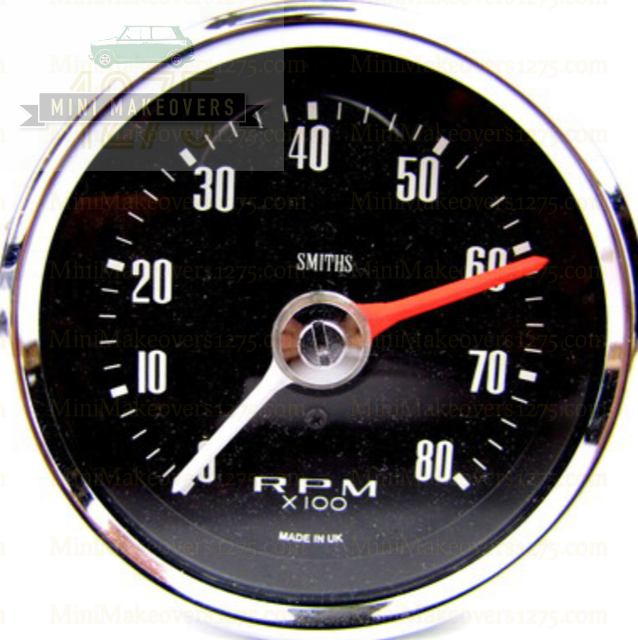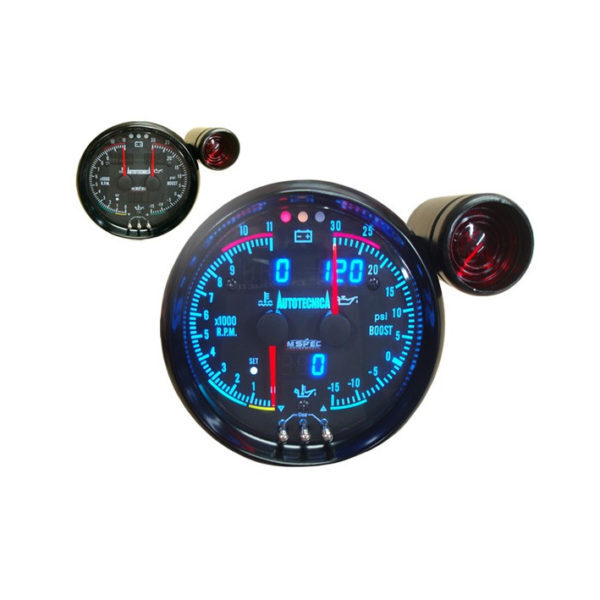How to Choose the Right Tachometer for Your Automobile or Motorbike
How to Choose the Right Tachometer for Your Automobile or Motorbike
Blog Article
Exploring the Functions and Benefits of a Tachometer: A Comprehensive Guide for Car Enthusiasts
From offering real-time data on engine speed to assisting in optimizing gear shifts, the tachometer offers as more than simply a dial on the control panel. Its diverse functions not just improve driving experience however additionally play an essential role in preserving engine health and performance.
Comprehending the Essentials of a Tachometer
In the world of automotive instrumentation, recognizing the essentials of a tachometer is crucial for any vehicle enthusiast aiming to dig right into the ins and outs of engine performance surveillance. A tachometer, typically displayed on the dashboard of a vehicle, determines the engine's revolutions per min (RPM) This essential tool offers real-time information on how quick the engine crankshaft is rotating. By checking the RPM, chauffeurs can guarantee they are operating within the ideal array to make best use of performance and efficiency.
Tachometers normally have a scale marked in changes per min, with a redline showing the maximum rate at which the engine can safely operate (tachometer). This info is important for avoiding engine damages and optimizing gear moving for hand-operated transmissions. Additionally, tachometers can aid in identifying engine problems such as misfires or a failing ignition system by identifying irregular RPM readings
Value of Keeping An Eye On Engine Rate

Monitoring engine speed is an essential element of automobile maintenance and efficiency optimization for automotive lovers and professionals alike. The engine rate, measured in transformations per min (RPM), shows exactly how fast the engine's crankshaft is turning. By maintaining a close eye on the RPM, drivers can ensure that the engine is running within the ideal array, preventing prospective damage from over-revving or stalling. Monitoring engine rate is particularly essential during gear shifts, as it aids vehicle drivers identify the correct time to alter equipments for smooth velocity and reliable gas intake.
Furthermore, tracking engine speed can likewise provide important insights into the general wellness of the car. In general, keeping an eye on engine speed with a tachometer is an essential practice that can boost driving efficiency, extend engine life, and ensure a more secure and much more satisfying driving experience.
Enhancing Performance With Gear Shifts
Optimizing efficiency with strategic gear changes is a vital element of making best use of a vehicle's performance and power output. Proper gear changing guarantees that the engine operates within its ideal power band, permitting smooth acceleration and enhanced fuel economic climate. When shifting gears, it is vital to take notice of the engine rate indicated on the tachometer. By monitoring the engine changes per minute (RPM), vehicle drivers can click over here now establish the most appropriate moments to upshift or downshift for optimal performance.

To achieve peak efficiency via gear changes, chauffeurs need to practice smooth and prompt shifts between equipments, matching engine speed with roadway rate to harness the complete capacity of their vehicle's powertrain.
Optimizing Efficiency With a Tachometer
Mastering the art of gear moving in high-performance cars not just enhances driving experience but likewise plays an important role in making the most of effectiveness with a tachometer. tachometer. By paying attention to the tachometer analyses, vehicle drivers can maximize their gear shifts to operate within the engine's most reliable array. When speeding up, changing gears at the best RPM shown by the tachometer can stop the engine from straining or underperforming, bring about enhanced fuel performance and overall efficiency
In addition, a tachometer helps chauffeurs prevent unnecessary revving, which not only wastes gas but additionally places unnecessary pressure on the engine. Constantly keeping an eye on the tachometer while driving enables smoother equipment transitions, reducing wear and tear on the transmission system over time.

Advanced Tips for Tachometer Use
To dig into innovative pointers for over at this website tachometer use, think about including the use of shift lights. Shift lights are top article visual indicators that brighten when it's time to change gears based on engine changes per minute (RPM), allowing for smooth equipment changes without regularly keeping track of the tachometer. By fine-tuning change factors and establishing advising thresholds, drivers can enhance acceleration and engine performance while decreasing the threat of over-revving.
Conclusion
Finally, the tachometer acts as a critical device for automobile enthusiasts to keep an eye on engine rate, improve efficiency with equipment changes, and make best use of efficiency. By understanding the features and advantages of a tachometer, vehicle drivers can maximize their driving experience and extend the life expectancy of their lorry. Making use of sophisticated ideas for tachometer usage can even more improve driving skills and general performance on the road.
Report this page